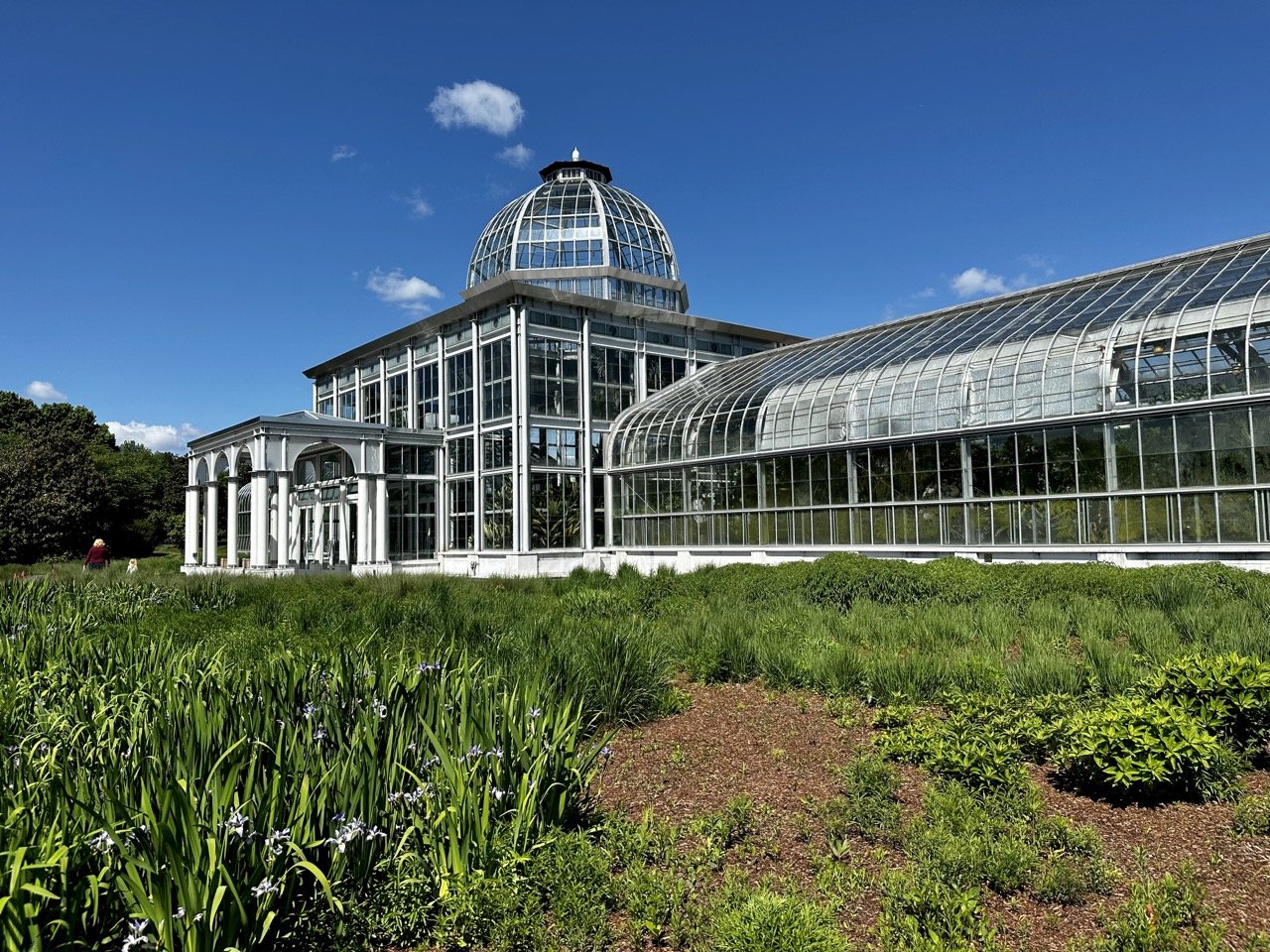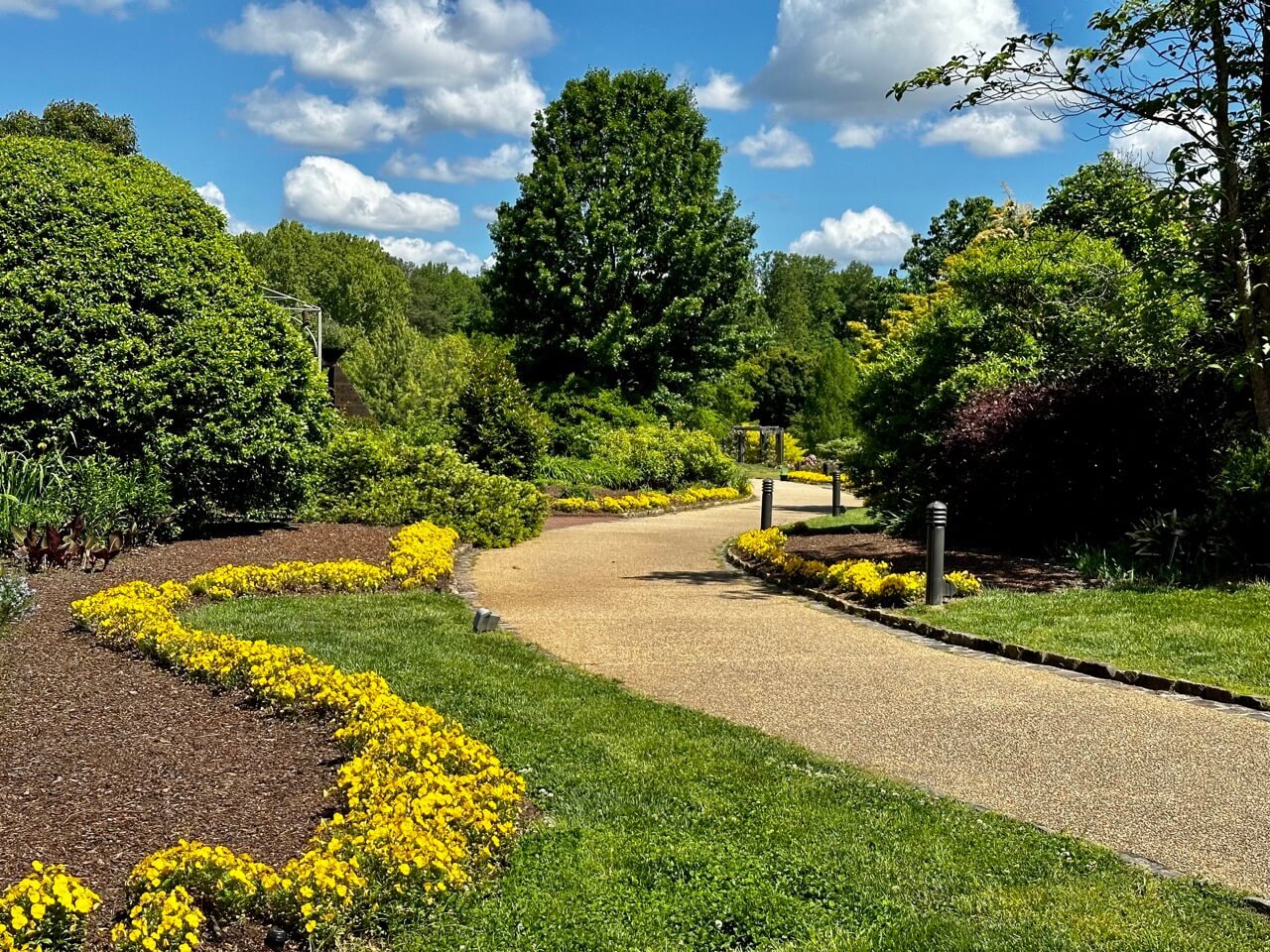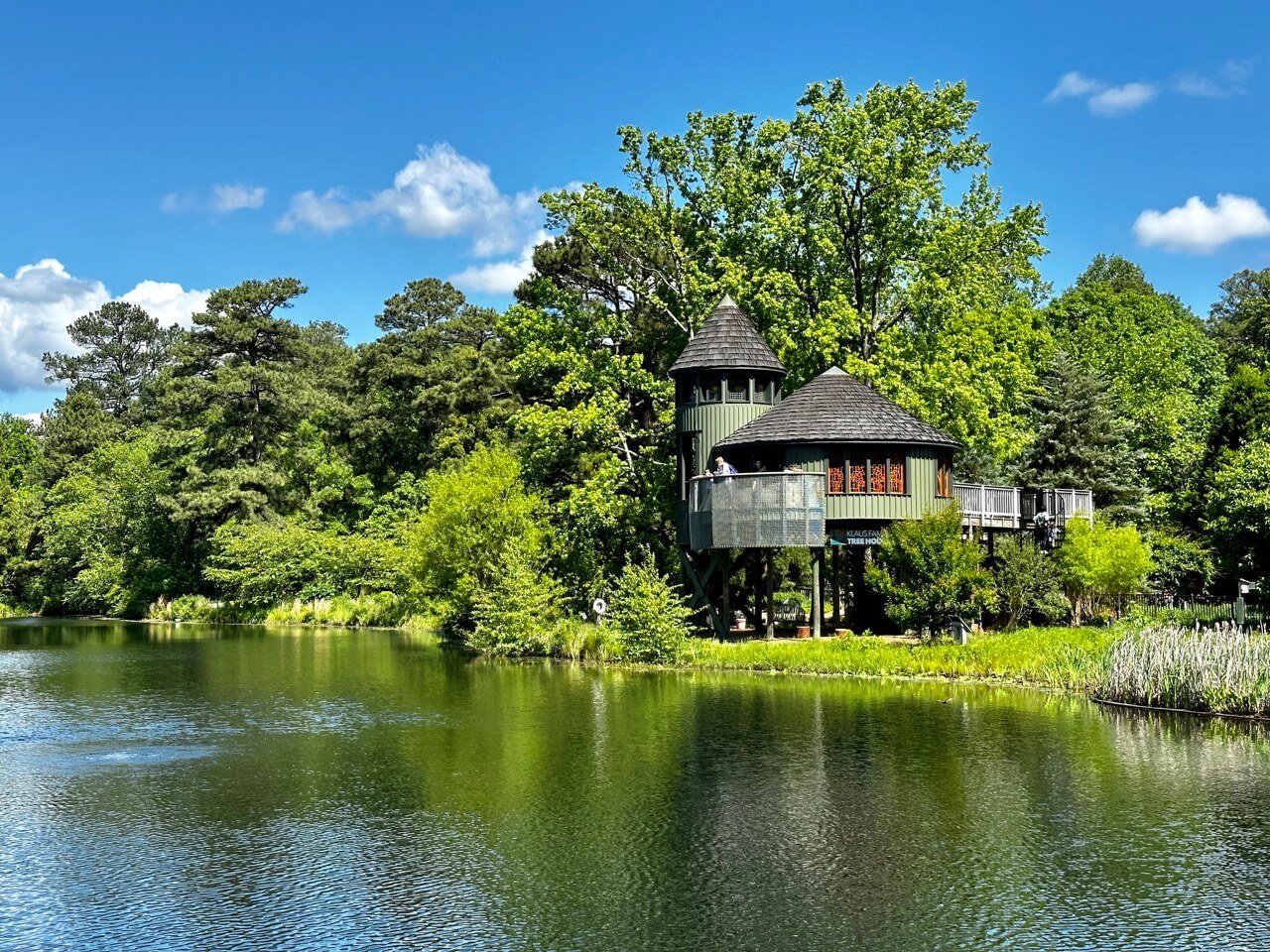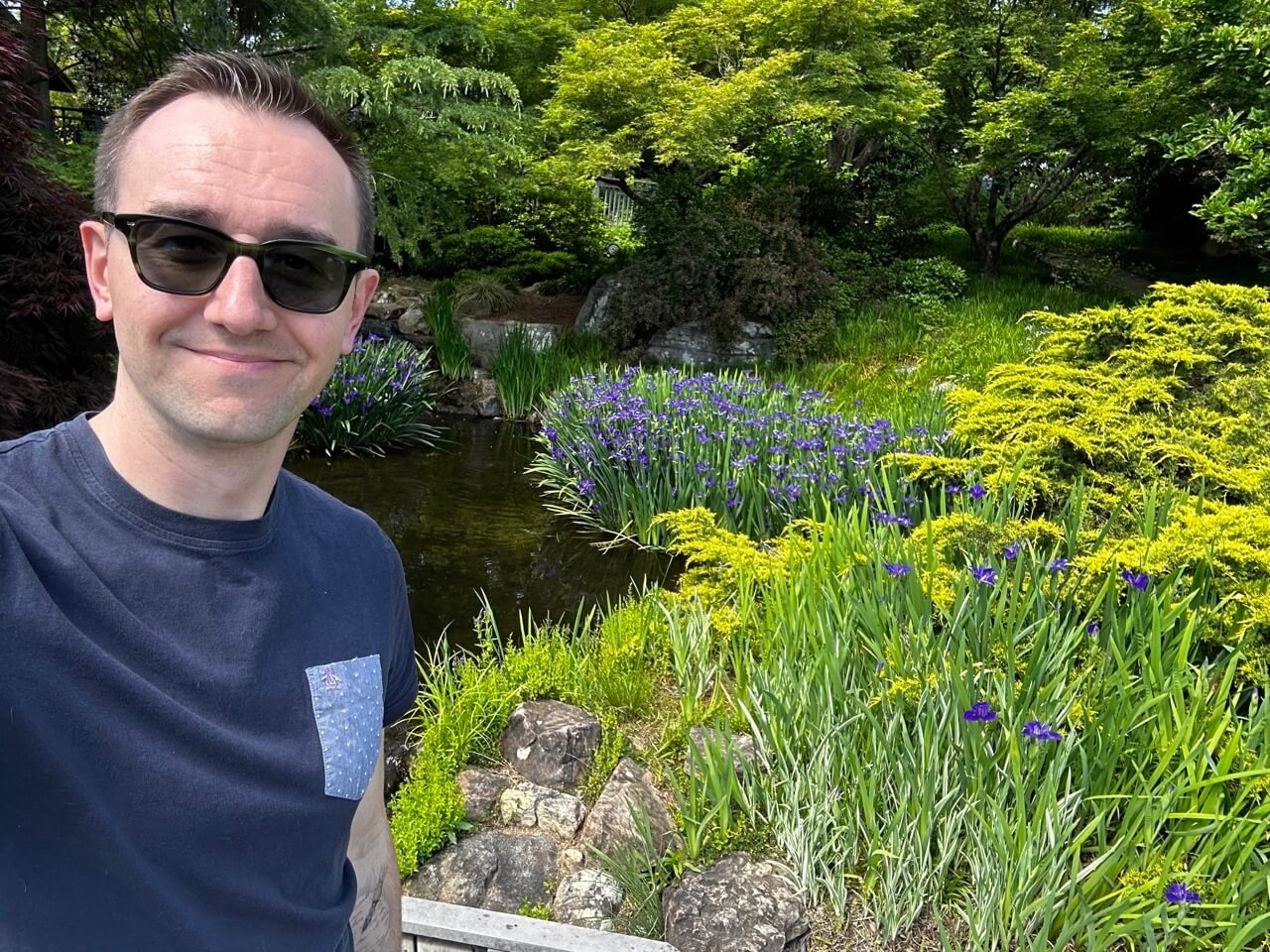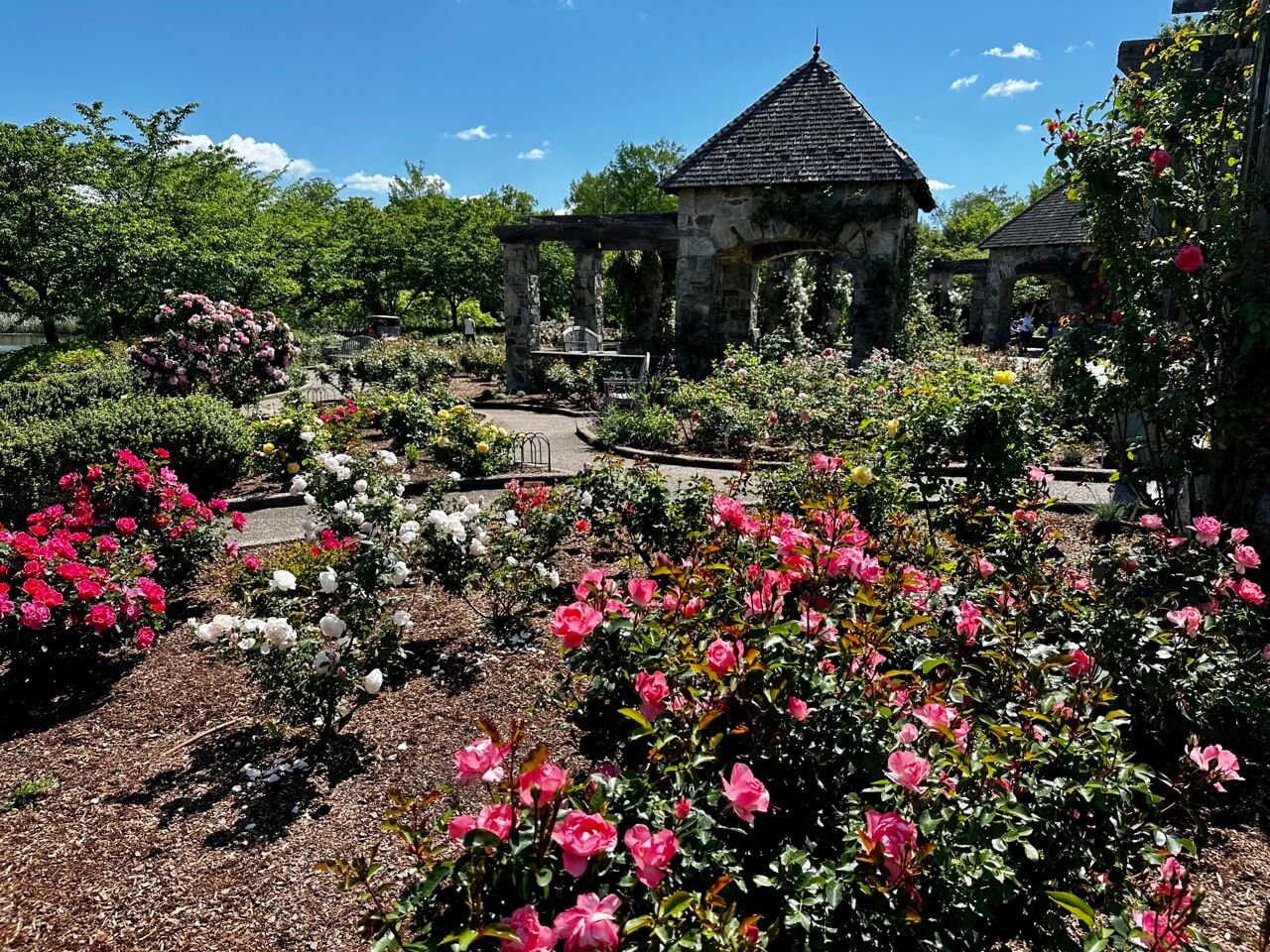The Lewis Ginter Botanical Garden Just Outside Richmond, Virginia: One of the Top Gardens in the US
The Lewis Ginter Botanical Garden, located in Henrico County, just outside Richmond, features themed gardens galore, a library, a conservatory, a cafe, and so much more. There’s always something new on, with an eye to keep visitors and members coming right on back, and all that makes it one of the great botanical gardens in the USA!
The famed Conservatory at the Lewis Ginter Botanical Garden.
Perhaps I’m not making any grand revelations here when I suggest that, when it comes to botanical gardens, you never quite know what you’re in store for. However, there are some botanical gardens that are absolutely a cut above, and remind us all why places like this should continue to have a valued place in our society.
When I pulled into the parking lot, there were ample sellers in the space of gardening and planting, helping folks get their gardens ready for the upcoming year. Then, I entered through the E. Claiborne Robins Visitors Center, and on into the gardens. I saw school groups meandering about, embarking on adventures real and imagined in a place of stunning beauty. It occured to me at that moment that the Lewis Ginter Botanical Garden is, perhaps more than anything else, a beacon for community.
This was further affirmed when I realized that this botanical garden is part of the “Museums for All” program, which offers $1 admission (free for kids) and $5 annual membership for those with a SNAP/EBT card.
Let’s dive a little further into what makes this place special.
A Brief History of the Lewis Ginter Botanical Garden
The story begins, as you might imagine, with Lewis Ginter, a prominent businessman and philanthropist. Ginter was born on April 4, 1824, in New York City. He moved to Richmond in 1842 and soon became involved in the tobacco industry, establishing himself as a successful entrepreneur.
In the late 1880s, Ginter purchased a large tract of land in Henrico County, just north of Richmond. This land, it should be noted, was once the “Oughnum Hunting Ground” of the Powhatan Indians, and later was owned by former Virginia Governor, Patrick Henry.
Ginter’s goal was to establish a beautiful garden on the property and, in short order, he began developing plans for what would eventually become the Lewis Ginter Botanical Garden. He started with what was known as the “Lakeside Wheel Club,” and it had a focus on cycling culture, which was all the rage at that time. He focused on this angle because he wanted a property that would be accessible to the public, but also a legitimate educational and culture resource.
A place, I suppose you could say, that had a net benefit for the community around it.
In 1895, Ginter engaged Charles F. Gillette, a prominent landscape architect, to help transform the property into one of the most stunning gardens in the nation. Together, they developed elaborate designs, including formal gardens, themed plant collections, and a variety of architectural features. Unfortunately, Ginter passed away just two years later, before seeing his dreams fully actualized but his niece, Grace Arents, took the reigns.
Many historians feel as if it was Arents who really caused this place to become what it’s known as today. She expanded the gardens’ collections, acquired additional land, and added new features, such as a conservatory and a classical-style tea house known as a “Bloemendaal.” When Arents passed in 1954, the garden became the property of the City of Richmond (as it was bequeathed by Arents), and they’ve continued to expand and improve upon it.
Today, when you visit, you’ll be able to see its over 80 acres in full effect (50 of those as gardens). I, personally, don’t feel as if I’ve ever seen in a botanical garden in such immaculate condition, and so clearly aiming to serve the community (and world) around it. In the 1980s is when the non-profit, the Lewis Ginter Botanical Garden Corporation, was finally chartered to ensure a bright and resilient future for the garden.
I was not surprised to come to learn that the Lewis Ginter Botanical Garden attracts visitors from all over the world.
What Should You See When You Visit One of the Best Botanical Gardens in the United States?
I’d first recommend seeing what exhibits are on. Incanto: An Oasis of Lyrical Sculpture was at the forefront during my recent visit, for example, and will be running until October 2023. This is a collaboration between Burning Man sculptor Kate Raudenbush and the poet Sha Michele.
The Incanto sculpture located between the entrance and the Conservatory.
The show showcases five grand sculptures specifically crafted for the garden, each with their own enchanting and thought-provoking qualities. The sculptures are illuminated from within, creating a dramatic effect that is meant to be paired with the accompanying words. Heads up - the sculptures are actually made to be seen in both the day time and the night!
Honestly, if you’re here when this is on, you ought to seek out all five sculptures, as they’re all striking in their own way.
Here are some of the other mainstays for visitors to the Lewis Ginter Botanical Garden:
The Conservatory: You can’t miss the Conservatory because it dominates the landscape at this botanical garden. It’s a striking glass structure that houses a variety of plants from a handful of different environments, including a tropical rainforest, a desert display, an orchid room, and a seasonal display area. When I visited, the Butterflies LIVE! indoor exhibit was also in full effect, and I’m told it’s typically open yearly between May and mid-October.
The Cochrane Rose Garden: This is a popular attraction at pretty much all botanical gardens and it’s certainly no different here. Expect to see hybrid teas, floribundas, climbers, and old garden roses in full effect. It’s a lovely place for photography, but I also found the smell to be about as inviting as it comes!
The Children's Garden: As a former educator, this was my favourite place at Lewis Ginter. The Treehouse is the centrepiece of the area, but there’s also a splash fountain, a butterfly garden, and a vegetable garden. Watching kids fully engaged in the hands on experiences here was a genuine treat.
The Asian Valley: Many of my longtime readers will know that I used to live in Seoul, and have spent extended time in Asia, so places like this absolutely call to me. As you may gather, this garden features plants native to Asia, including Japanese maples, bamboo, magnolias, and cherry trees. This section also incorporates traditional design elements from Japan and other prominent Asian nations, so it oozes peace and serenity.
In general, it’s never a bad idea to just walk around here and get lost a touch. That’s how I found my way to the Woodland Walk, the Morton Native Plant Garden, as well as the Cherry Tree Walk.
If you’re hungry after all you’re exploring, do know that the Garden Cafe will be happy to help you find an excuse to get off your feet for a moment and features things such as a hot soups, sandwiches and salads.
What Else Should You Know About the Lewis Ginter Botanical Garden?
Keep your eye out for roses!
This botanical garden is famed in part because of their educational offerings. If you’re in the region, take a peek at their adult classes which feature everything from natural perfume making to yoga. There’s also no shortage of children’s programming!
If you’re at the start of your gardening journey, you may want to utilize the Lora Robins Library, which is the Lewis Ginter Botanical Garden’s resource for “horticulture, botany, botanical art and history, and landscape design.” Library hours are 10am-4pm, but you can also take a look at their catalog ahead of time here.
The Garden is open year-round 9 a.m. – 5 p.m. (and from May 3-Oct. 28, the Garden has evening hours until 9 p.m. on Wednesdays-Saturdays). The Garden is closed Thanksgiving, Dec. 24-25. Tickets should run you $17 (at the time of writing), but members and children under 3 are free. They also have some free days, so be sure to check this page for more details.
I’d also like to note here that you’ll likely want to pop by the Garden Shop before you take off, as they’ve got plenty of great stuff kicking around.
And one final thing - once you do leave the grounds, you should also know that you don’t necessarily need to go far. SB’s Lakeside Love Shack offers a terrific, memorable meal, and Final Gravity Brewing Co. is right across the street from there if you’re still keen to stay near Lewis Ginter (and have it be worth it). Both are quite literally within a 5 minute drive!
The Lewis Ginter Botanical Garden Awaits
The E. Claiborne Visitors Center
Whether it’s natural beauty, educational opportunities, a neat new exhibit, or simply a more beautiful walk than you’ve taken in ages, there’s something for everyone here. I can swear that I walked around half the time, mouth agape, at some of the beauty that I was seeing, and that was being cultivated and curated.
Perhaps most importantly, it was hard for me to see how a member (or even child from a school group) wouldn’t leave after a visit here with a more profound understanding of the beauty of this planet of ours, and why we need to do all in our power to love, appreciate, and protect it.
In the end, this is a place where you can truly reconnect with nature, expand your knowledge, and find joy in the small yet magnificent wonders of the botanical world.

